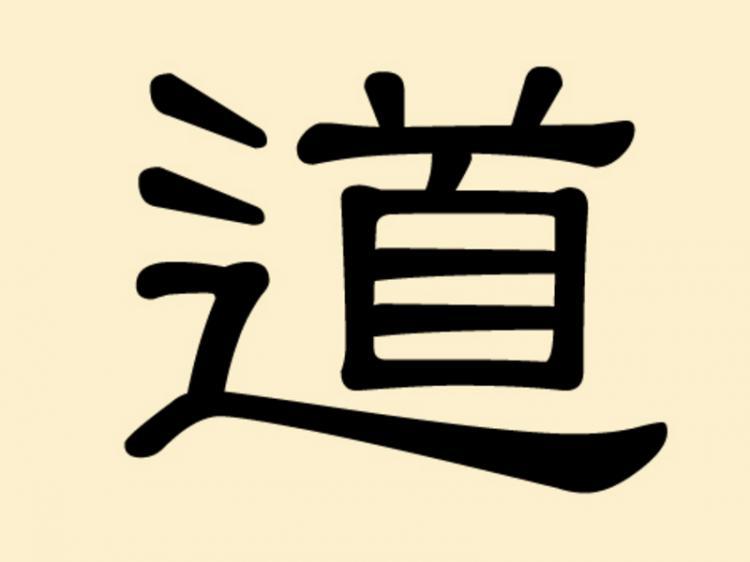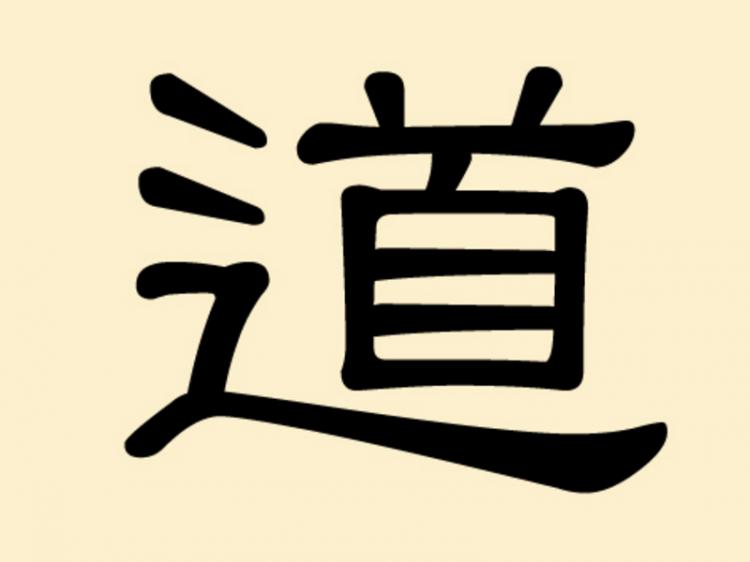The complexity of Chinese characters does not only derive from the almost inscrutable number of them, but also because of the many different meanings each character conceals.
道 (Dao) describes a path, a course, or also the path of life of a person, such as Daoism. The left ideogram 辵 consists of an upper 彡 and a lower half 止 (zhi). 彡 symbolizes the leg and foot of a person, while 止 portrays resistance. 辵 therefore symbolizes the arduous path of a person, who has to conquer obstacles, and with lots of practice, effort, and diligence will steadily progress.
The right character 首 (Shou) symbolizes the head, where the horns 丷 give extra to the meaning. 道 hence expresses in its entirety the spiritual elevation of a person through lots of practice. The path, 道, one can traditionally enter onto in many ways: Therefore, there is Dao for tea, known from the tea ceremony, or Dao for sword art.
Different from a simple art or simple practice, 道 requires not only the perfection of a handicraft but on top of that the constant elevation of one’s spiritual level, which on the other hand leads to a certain mentality. The path 道 therefore, can only be walked alone, and general instructions are not available.
道 is the same character for Daoism, the religious belief system that strives for enlightenment through constant improvement of the spirit. The precept for Daoists is truthfulness. They see their path in the realization of truthfulness to be the perfection/completion of their being.
Read the original article in German.






